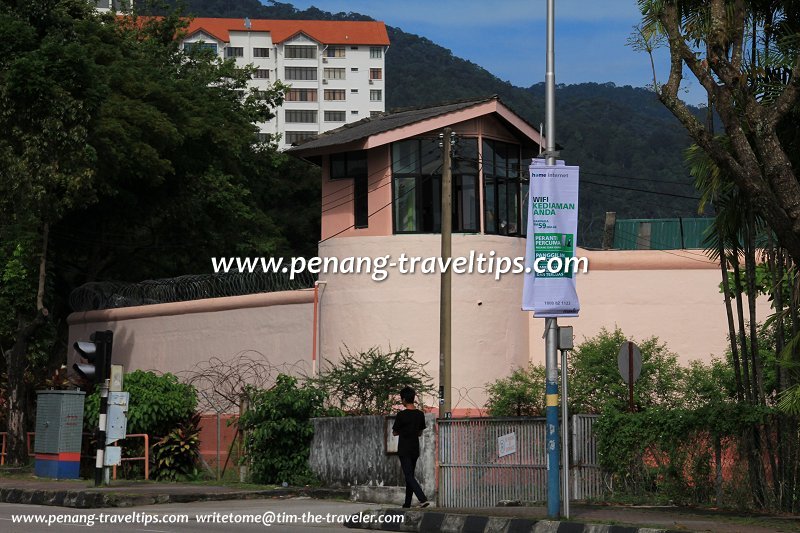 Penang Prison, as seen from Dato Kramat Road (16 December 2012)
Penang Prison, as seen from Dato Kramat Road (16 December 2012)
The Penang Prison (GPS: 5.41531, 100.31256), also written as Penang Gaol (that's pronounced "jail"), is the oldest jail in Peninsula Malaysia. Its history goes back to 1789, three years after the establishment of George Town as the first British trading port in the Far East, when the first batch of convict labourers arrived from Bengal. At that time, the jail was located within a makeshift fort - the Fort Cornwallis that we know of today has not yet been put in place.
The Penang Prison has occupied its present site since 1813, when the earliest building there was erected to house prisoners that were moved from an earlier jailhouse at the corner of Beach and Acheen Streets.1 Many of the roads in Penang were built with convict labour. Lieutenant-Governor R.T. Farquhar commented in 1805 that "convicts are by far the best coolies on the island". They were put to work in digging the canals in George Town as well as the aqueduct from the Waterfall to town.
Most of the canals that existed in Penang have been filled up, or so reduced in size that they are not nothing more than ditches and drains. The most famous is the Prangin Canal, which is still visible beside Prangin Road. The aqueduct too has been dismantled a long time ago - though strangely not a trace remains.
 Penang Prison, Dato Kramat Road (16 September 2010)
Penang Prison, Dato Kramat Road (16 September 2010)
The Penang Prison came to be at its present location around the 1870's, when the British military moved to occupy the large piece of grounds from Macalister Road to Dato Kramat Road. That area became a military precinct in the third quarter of the 19th century, with army camps, barracks and prison. Road names in the area such as Sepoy Lines Road and Barrack Road attest to the use of the area for military purposes.
The Penang Prison, in its present incarnation, is as old as Taiping Prison, which should rightfully be called the oldest prison in the Federated Malay States. In fact, Penang Prison was probably older, as the British personnels involved in the establishment of the Taiping Prison, was first employed in Penang, before being hired to control the disturbances in the volatile Larut District.
People like Captain Speedy came to Penang in 1871. He planted the Baobab tree within the military compound - it still stands today on a small traffic island between Jalan Residensi and Macalister Road.
In 1873, he resigned to work for Ngah Ibrahim in Larut. His tenure in Perak was a mere couple of years, but within that short period he was involved in the founding of Taiping. By the time JWW Birch was murdered in 1875, Captain Speedy was already off to the Sudan. Then in 1879, Taiping Prison was established.
Today the Penang Prison occupies a part of George Town bordered by Gaol Road, Western Road and Dato Kramat Road. It is surrounded by a wall with watch towers posted at regular intervals.
Contact
Penjara Pulau PinangGoal Road
10990 George Town, Penang
Phone: +60 4 228 9562
Email: prppng@prison.gov.my
Penang Prison is  on the Map of Jalan Utama, Penang
on the Map of Jalan Utama, Penang
References
- Malay Mail (29 September 2019): Historian finds proof Penang Prison is the oldest British-built jail in Malaya
List of Prisons in Penang and Prisons in Malaysia

Copyright © 2003-2025 Timothy Tye. All Rights Reserved.

 Go Back
Go Back